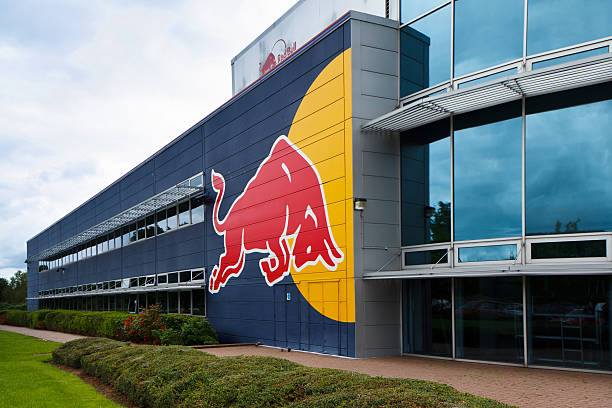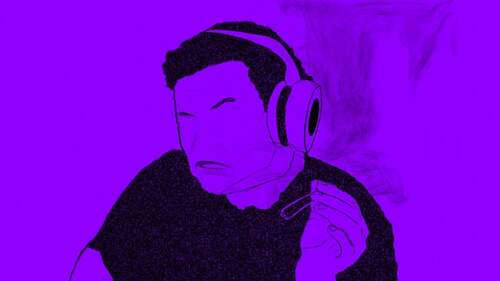People think of extreme sports when they hear of Red Bull, a multinational energy drink company. This idea also flows seamlessly with its famous tagline, "Red Bull gives you wings."
Although you won’t actually fly after sipping Red Bull, the brand positions its products to help consumers push beyond their limits. And Red Bull itself goes above and beyond in its business processes, especially marketing.
The Red Bull marketing strategy incorporates extreme sports sponsorship, advertising, Guerrilla marketing, and more.
We have witnessed the result of this power-packed strategy as the company has the largest market share in the energy drink industry. Additionally, the company secured over $1.5 billion in sales revenue in the US alone.
Want to know how Red Bull Marketing Strategy contributed to this sales success? Tag along to find out!

An Intro to Red Bull Marketing Strategy
Red Bull, the brainchild of Dietrich Mateschitz, came to life in 1987. This invention created a whole new product category–energy drinks. This fell in line with the brand's first product launch in Austria.
Since then the energy drink powerhouse has promoted several events and commercials, which have been received with ground-breaking publicity. This has brought in millions of loyal fans. And the world continues to get more awe-inspiring moments via the Red Bull marketing strategy.
Now, anyone with an internet connection can catch the next Red Bull-sponsored event virtually. However, it wasn’t so easy in its early days. There was no social media, engaging customers was definitely a challenge
Despite these obstacles, Red Bull powered through and deployed traditional marketing methods. For instance, the company had its first cartoon commercial in 1992. Red Bull has since gone past this, expanding brand awareness via a full-fledged marketing strategy.
Red Bull Marketing: Going the Unconventional Route
"Red Bull gives you wings," the company’s brand message is at the core of its marketing strategy. This propagates a high-energy philosophy. The caffeine powerhouse delivers this via extreme sports sponsorship, influencer marketing, and publicity from the press. But first, it needs a target audience.
Red Bull focuses on adrenaline enthusiasts – particularly college students and bee-busy employees. The age range for this focused demographic is 18-34 years. However, all in all, Red Bull's primary target audience are consumers with a large appetite for high-risk events.
Building Brand Awareness in the Target Market.
Brand awareness refers to the degree of familiarity a brand's target audience has with its product, name, or service. Red Bull propagates brand awareness via:
Event sponsorship
Red Bull reaches its target audience at strategic locations and avenues. This includes film events, music festivals, and sport meets. For instance, it is famous for driving publicity in extreme sports like Formula One and cliff diving.
Many young people enjoy these action sports; serving as an opportunity for Red Bull to promote its products. For example, during the Red Bull Air Race in Detroit, the caffeine powerhouse flooded the event with its logo. Models also handed out its energy drinks to fans, to refuel for the intense flight action.
Red Bull has sponsored over 500 high-risk sports, enshrining it as a world-class brand in the extreme sports niche. Additionally, Red Bull also has its own sports teams in football, auto racing, ice hockey, and several other sports.
A Unique Company Project.
Brands often utilize marketing solely as a tool for boosting product sales. However, Red Bull deploys marketing to set records in other avenues apart from sales. A notable example would be its 'Red Bull Startos' mission.
Felix Baumgartner, a famous skydiver, was thrust to the edge of space, to prepare for a jump- from a height of 38,600 km. Felix had the world glued on him as millions watched the event live on YouTube.
Although deemed impossible, the successful space jump landed three official world records- proving that a human in free fall can beat the speed of sound.
Furthermore, the daredevil stunt required advanced tech equipment, contributing to innovations in future aerospace programs. The project cost $30 million. However, this huge investment paid off, as it pushed in over $500 million in product sales for the energy drink giant.
Consistent Branding.
A key feature in the Red Bull marketing strategy is its consistent and powerful branding. Since 1997, the company has maintained its famous household slogan, "Red Bull gives you wings."
Although it faced a $13 million lawsuit as a consequence, Red Bull still stuck true to its unique tagline. The company logo consists of two red bulls ready to lock horns and a yellow sun in the background. This embodies their brand identity- presenting power, fearlessness, and perseverance.
Another contributing factor to Red Bull’s consistent brand success is its viral and highly shareable content. It focuses heavily on video and blog content displayed on its website homepage. This engaging content keeps the audience in the loop of its recent activities.

Marketing Mix
Red Bull marketing strategy contains the marketing mix (product, pricing, place, and promotion). This helps the energy drink giant gain a competitive advantage in the market while improving brand growth.
Here’s a breakdown of the marketing mix:
Product
Red Bull energy drinks mix a fine blend of ingredients to revitalize the body and mind. For instance, its primary energy drink product contains caffeine, taurine, vitamins, sugar, and water. The company also rolls out edition flavors and sugar-free drinks.
Consumers can soothe their taste with watermelon, dragon fruit, coconut, and blueberry flavors. Additionally, it also has drink that contains zero sugar. This is suitable for customers that are dieting or who don’t have a sweet tooth but want to keep an athletic performance.
Another unique feature of the Red Bull product message is its sustainability mantra. The brand dedicates a special edition to promote awareness about maintaining a sustainable environment.
Pricing
Red Bull marketing strategy also factors in premium pricing for its products. It charges extra compared to the price of competitors like Rockstar and Monster. This premium approach originates from its dominant position in the energy drink market. And its ability to consistently serve high-quality products.
Red Bull’s premium pricing pours in financial benefits for the company- as it can secure a higher profit margin on product sales. It improves brand perception, as customers begin classifying Red Bull energy drinks as prestigious products.
Red Bull marketing strategy also taps into pricing to gain a competitive advantage. This naturally occurs as consumers evaluate product quality based on price, and tend to pay more for high-value products.
Place
This marketing mix is effective for helping brands bring their merchandise to consumers. It utilizes distribution and location to ensure products are available where and when needed.
The brand utilizes the intensive place strategy, making its energy drinks within an arms reach in many locations. An effective location strategy helps Red Bull reach existing and potential customers via diverse distribution channels.
Red Bull stampedes the location of its target audience, such as restaurants, supermarkets, and nightclubs. This allows consumers to refuel their energy with a powered-packed can of caffeine. The energy drink giant has its products available in over 171 countries worldwide.
Promotion
Red Bull advertising and promotional efforts focus on extreme sports sponsorship. This includes skating, windsurfing, Formula one, and mountain biking. The company invests heavily in these activities to elevate brand awareness.
For instance, the aforementioned mission 'Red Bull Stratos'. The company poured in $30 million into this successful project and landed $500 million in sales.
Furthermore, the energy drink giant keeps fans in touch with its trendy activities via Red Bull TV app. You can now enjoy Red Bull live events, shows, and films on the go. The app is readily available on different devices, including smartphones and laptops.
Partnerships are also relevant ingredients of Red Bull marketing strategy. In 2016, it partnered with GoPro, a tech company. This was to put fans on the field of action as they could now experience live events delivered by point-of-viewing imaging technology.
Two Impactful Customer-Centric Marketing Approach
Red Bull marketing utilizes content and Guerilla marketing in addition to its marketing mix and brand-building approach. Here’s how the caffeine powerhouse applies these strategies:
Content marketing
Red Bull consistently serves content that powers engagement with its target audience. The company engages with its social media followers on a personal level. For instance, it hosted a Q&A session with Felix Baumgartner.
This allowed people to connect with the Austrian daredevil on a personal level. Red Bull also shares memes and teasers that young internet users can relate to easily.
YouTube is another valuable content delivery channel for Red Bull. It has about 6,000 videos on the platform, with its space jump video receiving over two million likes and 120 million views.
Red Bull is a multinational brand serving content that resonates with people from different demographics. It does this effectively by promoting music festivals in different regions.
Guerilla marketing
Red Bull marketing strategy centers around its target audience. The brand takes its customer-centric approach further via the student ambassadorship program.
This provides students the opportunity to market Red Bull energy drinks. They would represent the brand during events like college sporting events and collaborate with the sales team.
The iconic 'mini' - the Red Bull advertisement car, is available to student ambassadors. This is another significant brand promotion vehicle as ambassadors use it to travel within and outside campus.
Red Bull Marketing Strategy: Success By the Numbers
In 2021, the energy drink industry had a global market size of approximately $86.35 billion. Considering the US energy drink sector, this figure lands at $28.25 billion. This is more than 25 percent of the global market
.Red Bull stands as the world's leading energy drink brand. It holds about 23 percent market share for its primary product alone. Here’s a highlight of the top five energy drink companies by market share:
- Red Bull (23.3 percent)
- Monster Energy (23.2 percent)
- Bang Energy (8.6 percent)
- Red Bull Sugar-Free (6.3 percent)
- Red Bull Summer Edition (4.3 percent)
Although Red Bull dominates the caffeine industry, Monster Energy is a fierce competitor. In 2021, it only took the lead by 0.01 percent. There are also other brands like Bang Energy, gaining ground in the industry.
But Red Bull marketing strategy has powered it to the top of the list, and the brand doesn’t seem to hit the brakes anytime soon.
Mini Take-away from Red Bull Marketing Strategy
A crucial question that keeps many startup founders or entrepreneurs thinking is "how do I sell my products?" When you consider the over 800 unicorn startups –sales and marketing become top business priorities.
Afterall, they often go all the way to buildd fantastic products and communities. Understanding how to implement a result-driven marketing strategy can significantly improve product sales.
Here are five valuable lessons from Red Bull marketing strategy for your startup/business growth:
Impactful marketing delivers "help" while "selling."
Red Bull positions its product to empower consumers to push beyond their limits. To naturally improve sales, buildd products or services that are solutions to a consumer pain point.
Buildd a distribution engine.
Having a great solution that is not readily accessible can impact sales. Fix this with a well-structured channel for delivering their solutions to customers.
Deploy marketing before launching products.
This helps buildd awareness and raises anticipation about your product-in-development. Also, you would generate leads that can convert to paying customers.
Communities drive a successful product launch.
Building a flourishing community is a valuable avenue to promote your products. Members can relate to your brand and would actively advocate for new products you roll out.
Buildd human connections on social media.
People want to engage with humans, not ads. Create avenues like Q&A sessions where your audience can interact with you directly. This way, you can better understand their needs and align your products to meet them.
Customers do powerful marketing.
Having customers promote your brand naturally fetches your business more leads. They deploy word-of-mouth marketing, which naturally drives product awareness, saving you marketing or advertising costs.
Red Bull marketing strategy undoubtedly delivers impressive results. You should consider incorporating it into your business and other marketing tools like SEO. Begin with the simplest introduction to SEO on the internet.





 Entrepreneurship
Entrepreneurship


